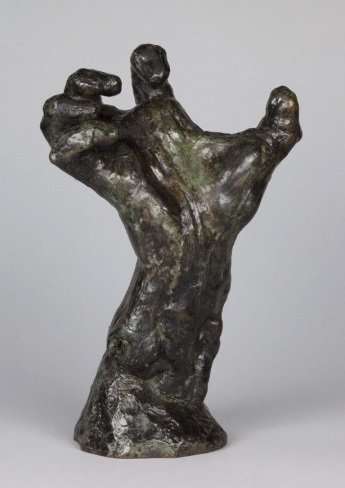Auguste Rodin, The Clenched Hand, c. 1885

The Work
Rodin made several sculptural studies of separate body parts, which nevertheless communicated a strong emotion. This sculpture was possibly a study for the monumental work The Burghers of Calais, and this hand may belong to one of the condemned prisoners.
Historical Moment
The Third Republic (1870-1914) was an era of peace in France. Prosperous cities commissioned works of art for public display, and anecdotes of local interest were favorite subjects. The Hundred Years’ War had great importance for the city of Calais, because of its strategic location on the English Channel.
The Genre
Romanticism was a movement that began near the end of the 18th century and had its strongest impact in the 19th century. The image sometimes told a familiar story from literature, and the word "romantic" derives from the word "roman" in French, meaning "novel" in English, a literary work of fiction. In romantic sculpture, artists sought to engage the viewer’s emotions with dramatic effects of facial expression and movement.
The Artist
Auguste Rodin (1840-1917) was born in Paris to a family of low social status. He was admitted to the School of Decorative Arts, and he studied sculpture with Antoine-Louis Barye. He did not have success at the beginning of his career, because his sculpture contradicted the rules of classicism by incorporating intense emotion and eroticism. Later, however, he became the most famous French sculptor in the world. He often made several versions of his sculptures in different sizes. His best-known works are The Thinker (1882) and The Kiss (1886).

